The words “since time immemorial” are often uttered by Native Americans when asked how long their people have been in America. This episode explores that long-ago time when the first humans crossed the land bridge into America – and the cues these people left behind. It was a time of wooly mammoths, mastodons, camels, giant bison, giant sloths, and even giant armadillos.

Watching Episode 80
You can watch Episode 80 in its entirety without ads by following the link below to Archive.org. Click here to see Episode 80 as seen on RVTV.
Watching in segments
Click the following to see Segment One. https://youtu.be/WdkO7JQJnTU
Click here to watch Segment 2
Watch Segment Three
Unit Themes
This unit on Native Americans contains various themes that pertain to Social Studies.
Perhaps the most central theme to any Social Studies unit was voiced by Rdney King, a citizen of Los Angeles who was beaten by police. The L.A. Riot broke out when the offending officers were found not guilty. City officials appealed to King to try calming the violence. In his plea to rioters, he asked, “can’t we all just get along.?” While his words were an attempt to end violence, they form the core of Social Studies and of society itself. During this unit on America’s indigenous people, ask yourself this question. The history of America’s first people and their descendants is all about the issue of whether or not people from different backgrounds can get along with each other – can they share a country in peace?
Another Social Studies theme for this episode is Human Migration.
Episode 80 Summary
This is the episode where we begin featuring videos of the epic journey through distance and time to populate the American continents with people. We begin with Beringia – the land bridge that Asians crossed during an ie age that had lowered ocean levels. We go beyond that process to the hunting of mega fauna using spear points. This all happened over 14 thousand years ago according to the physical evidence like fossilized human scat at Paisley Cave. Our video – Since Time Immemorial – illustrates the importance of western hunting points in tracing the epic migration that passed through Eastern Oregon and ranged as far at the tip of South America. We feature a film clip from the Favell Museum in Klamath Falls, Oregon produced by Zack Brown. We use this epic history to review regular and irregular verbs used in the simple past.
Language Objectives
Use simple past tense verbs to relate actions, events, and states of being from the past. Apply the rule for changing regular verbs to past tense. Change some common irregular verbs to past tense. Describe an object using linking verbs. Be sure to see the chart of irregular verbs at the end of this page.
Academic Content Objectives
Geography: Locate the Bering Straight – site of the Bering Land Bridge. Describe the landscape of the Northern area of North America during the Ice Age. Describe that area today. Describe the kinds of landscapes that facilitated settlement for the first Americans. Science: explain the role of climate in the first populating of America. Name examples of the Mega-fauna that existed in the Americas when people first came to America. History: Trace the great migration that resulted in the peopling of America. Archeology: Explain how archeologists use excavations and dating methods the determine when and where early people existed.
In this episode, I state the rationale for Social Studies as an essential part of education. Social Studies invites us to ask some critical questions about our world and the people in that world. I used the words of Rodney King to ask a core question that justifies engaging in Social Studies. King’s words during the L.A. Riots were, “Can’t we all just get along?” That really is the central question. I offer no answers, but I hope that by contemplating the question we as humans may arrive at a positive answer.
Videos used in this Episode
We shared a video about the first people arriving in America. Click here to watch that video. This is Native Americans 2: Since Time Immemorial, one of several videos about Native Americans in fairly chronological order. Subsequent episodes will include other videos in this sequence. Other links to the same video: Click here for the video on Rogue Valley Voices. For another Archive.org link, click here for RogueTV.
External Links
This Episode features the earliest human DNA at Paisley, Oregon, placing humans on the North American continent at least 14,000 years ago. That’s earlier than the Clovis people we believed to be here. The following video from the New York Times explores the possibility that humans were here much earlier than that. Click here to see this video on You Tube.
Another great video about early Americans is about the RimRock excavation in Eastern Oregon. This Bureau of Land Management (BLM) project may uncover objects that set the peopling of American to 15,000 years ago. Click here to see the video. There’s some intrigue attached to this finding, including the “orange tool.” This discovery may even predate Paisley Cave.
Mammoths and mastodons were believed to be the main food source for the earliest immigrants to America. Click here for a video about these vital animals. This You Tube Video is likely to have ads.
For more of Paisley Cave from Archeology Magazine, click here. Oregon Encyclopedia has an entry on Paisley Cave updated in 2023. You can see it by clicking here. Wikipedia has an article on Paisley Cave, which you can watch if you click here. Of course, Wikipedia shares many sources – so gong there can lead to many different sources.
Books
The Cherokee Creation story I began sharing is from the book The Portable North American Reader Edited by Frederick W. Turner III. We share more of the story in subsequent episodes. The ISBN of this book is: 0-14-015077-3. A revised version is available. It’s listed on Amazon, Barnes and Noble, and other sites that sell books. You local library may well have a copy. There’s a lot packed in this little book – however, there as no illustrations. Without that support, it’s all up to the wording to help you comprehend.
Learning Materials
All these past events – from time immemorial – happened long before present day. They call for the use of past tense verbs, yet those verbs can be a little tricky, even in the simple past. Here are some of the materials we used in Episode 80


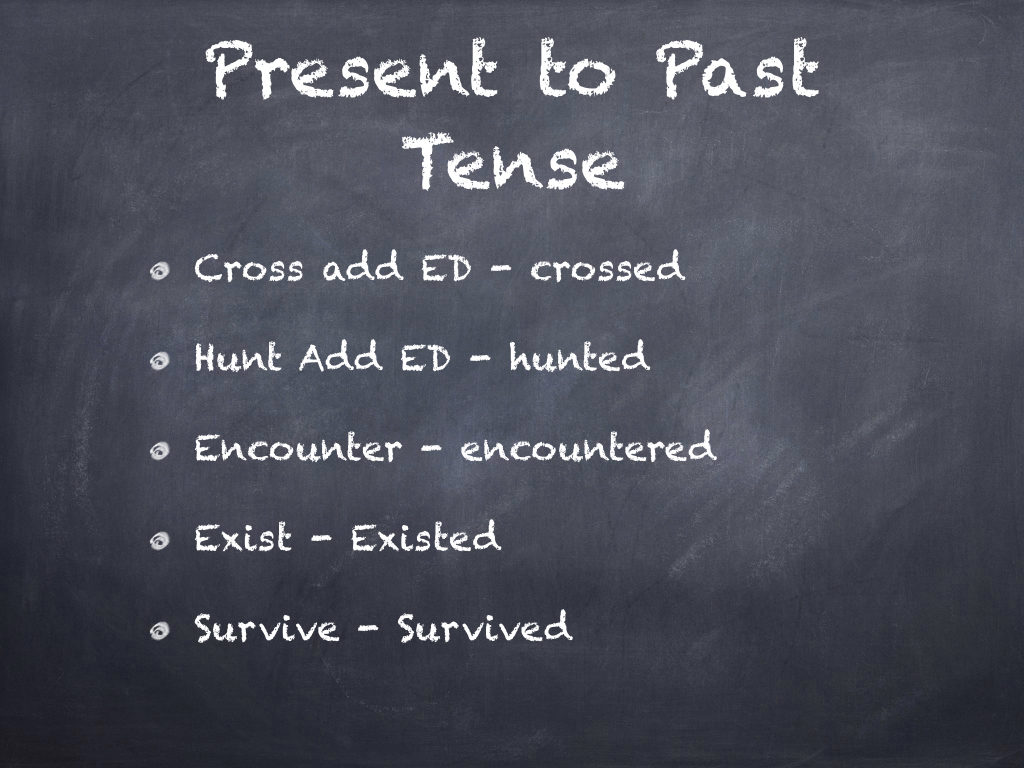
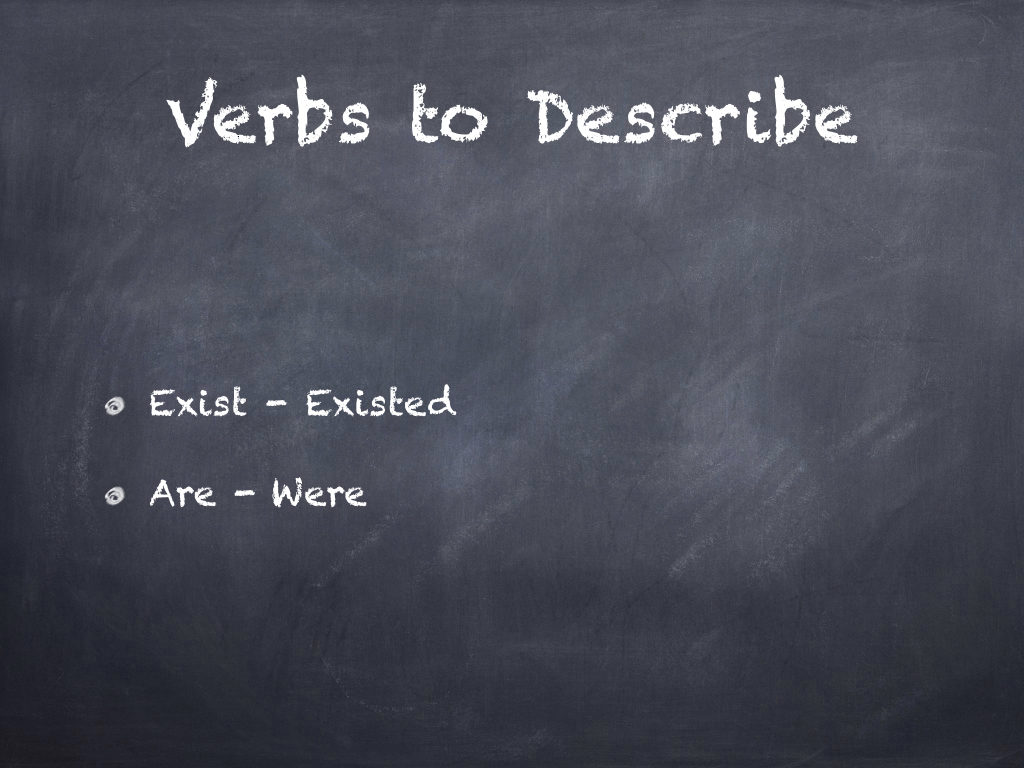
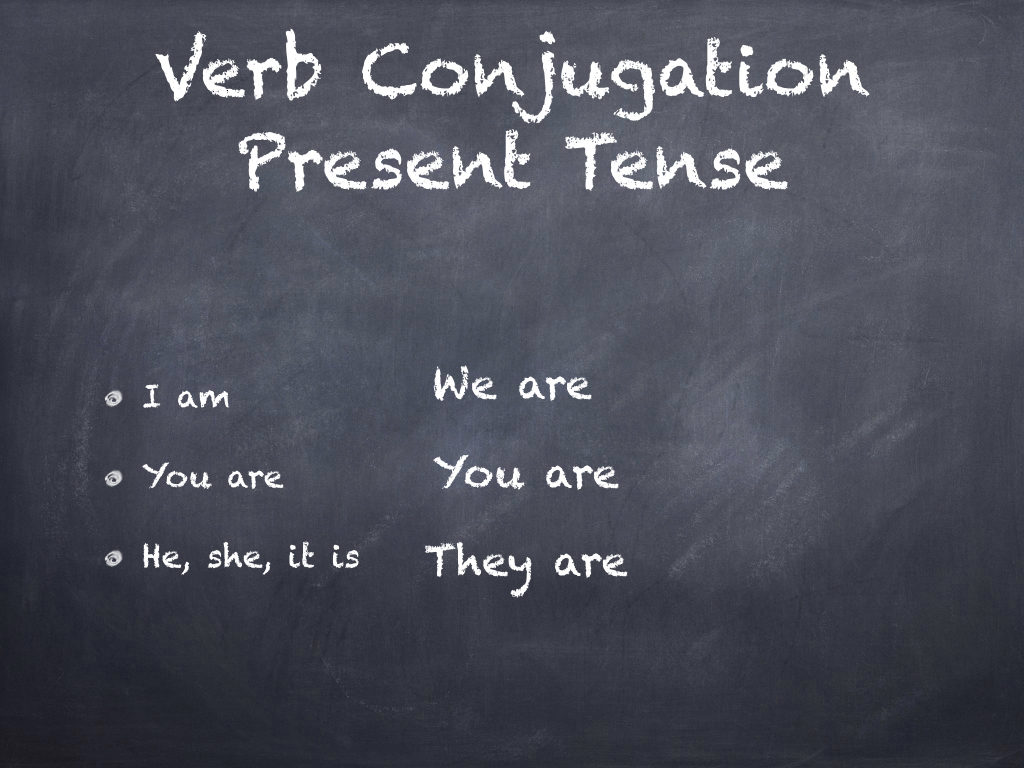

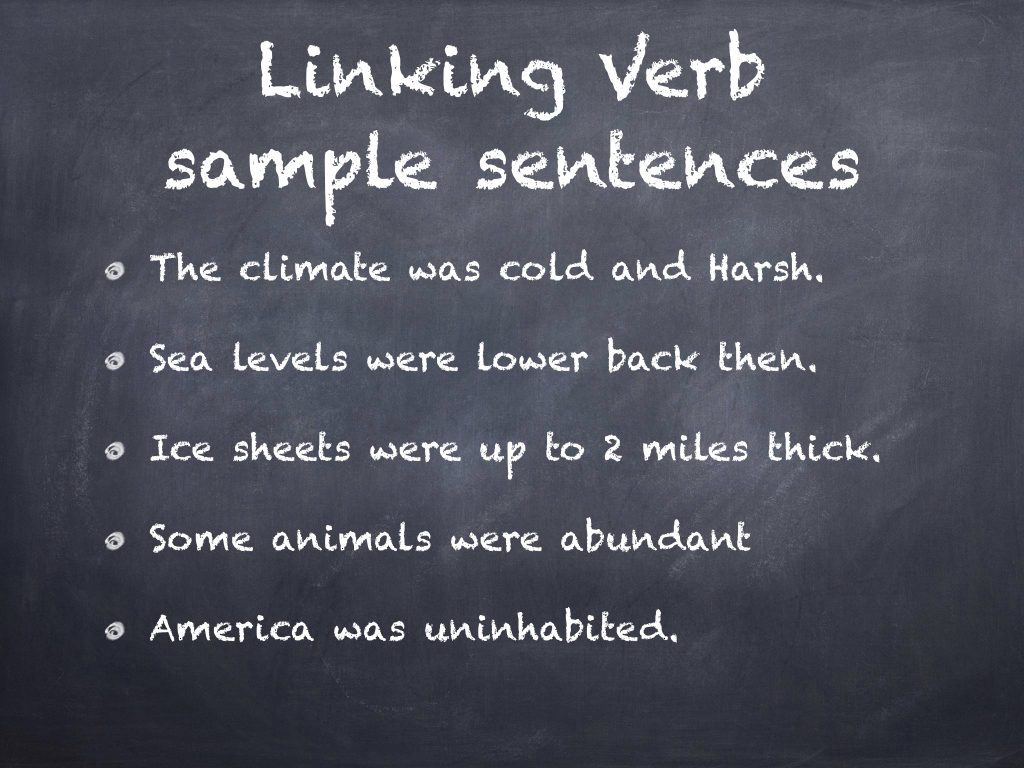
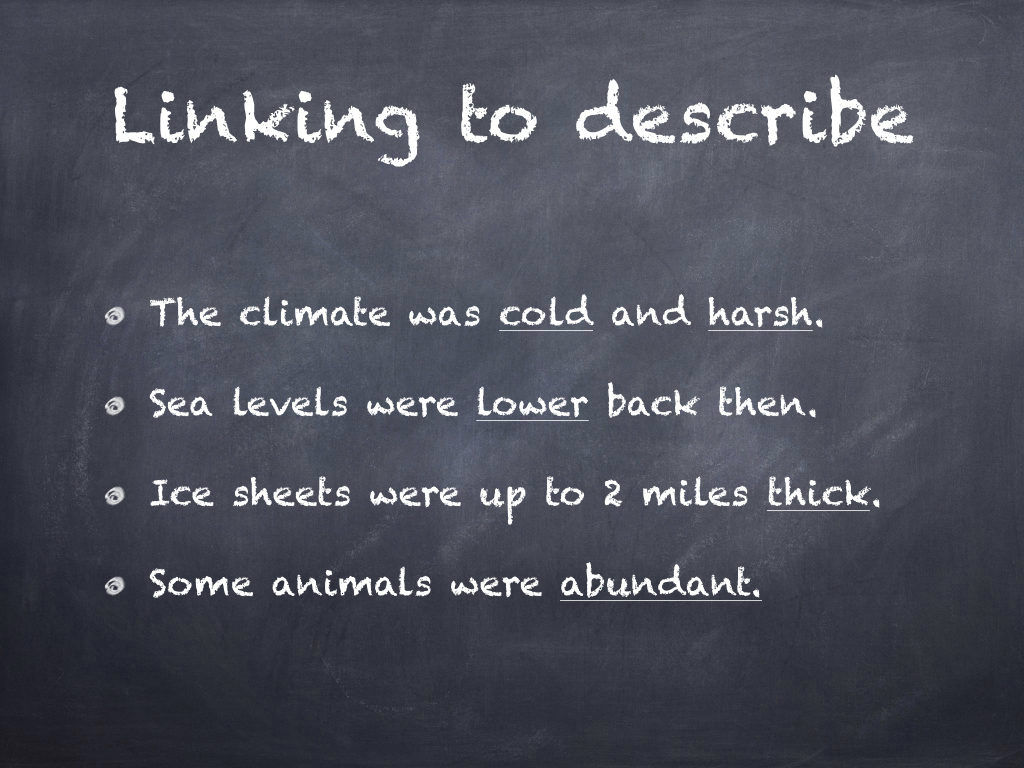

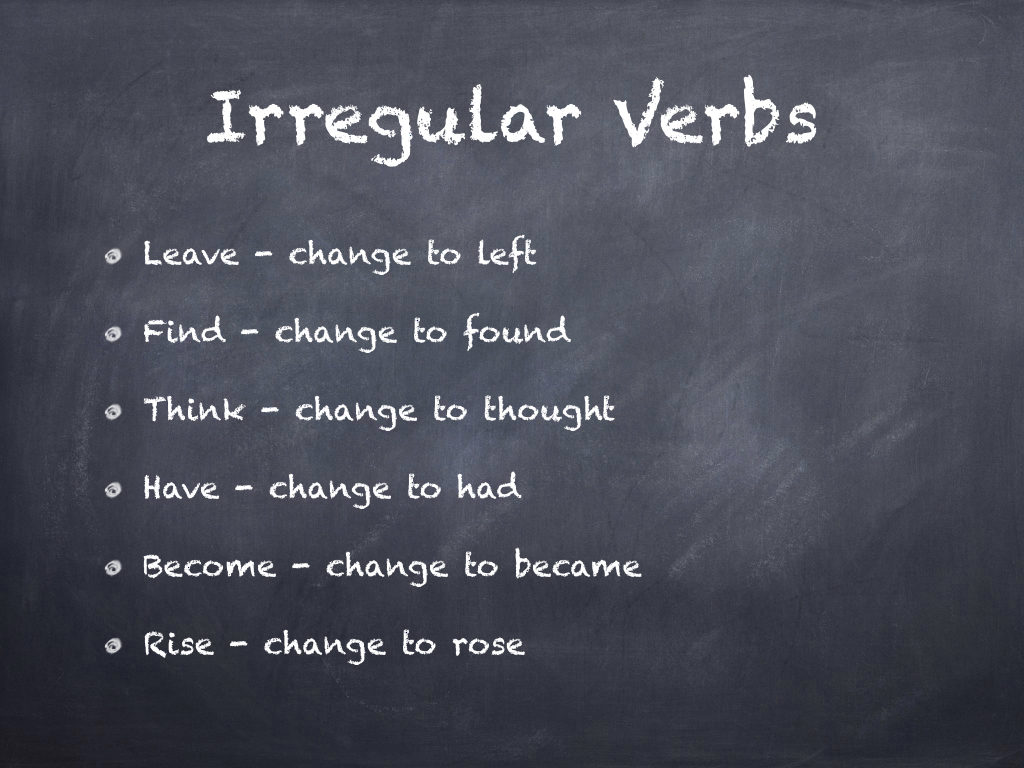
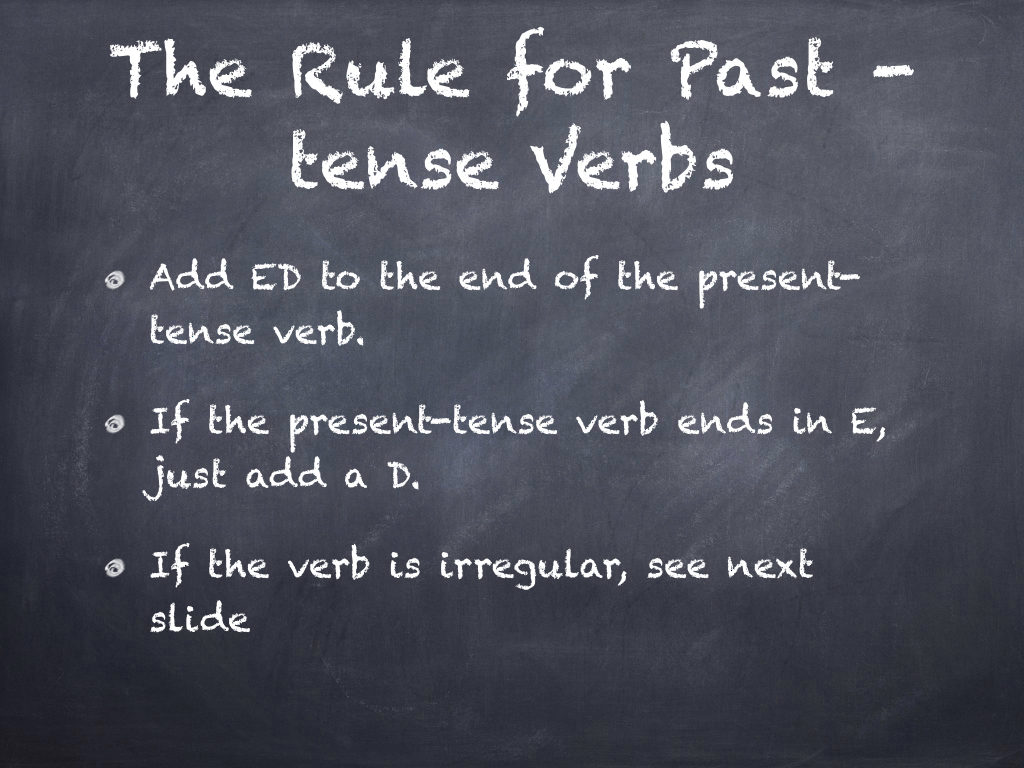

Here are some other examples of Regular past tense verbs from their present tenses
Open – opened
act – acted
grab – grabbed
believe – believed
count – counted
cross – crossed
elect – elected
exist – existed
escape – escaped
play – played
die – died
move – moved
smell – smelled
appear – appeared
ask – asked
produce – produced
provide – provided
laugh – laughed
smile – smiled
follow – followed
carry – carried
Irregular past-tense verbs
begin = began
build = built
make = made
set = set
have = had (it, he, she: has = had)
are = were
come = came
More common irregular verbs:
be = was or were drink = drank
become = became drive = drove
begin = began eat = ate
bend = bent fall = fell
bite = bit find = found
bleed = bled fly = flew
blow = blew forget = forgot
break = broke get = got
bring = brought give = gave
build = built go = went
buy = bought grow = grew
catch = caught have = had
choose = chose hit = hit
cut = cut hold = held
dig = dug keep = kept
do = did know = knew
leave = left lose = lost
make = made meet = met
pay = paid put = put
quit = quit read = read (pronounced “red”)
ride = rode run = ran
say = said sell = sold
sing = sang sit = sat
sleep = slept speak = spoke
speed = sped spend = spent
stand = stood swim = swam
take = took teach = taught
tell = told think = thought
throw = threw wear = wore
weep = wept win = won
write = wrote
Next Episode
Episode 80 goes way back in time to communicate some very important events in the peopling of America. Some events happen before others, and we’ll share some ways to communicate past events in relation to other past events when we feature the Past Perfect verb tense. Click below to visit the Episode 81 page.